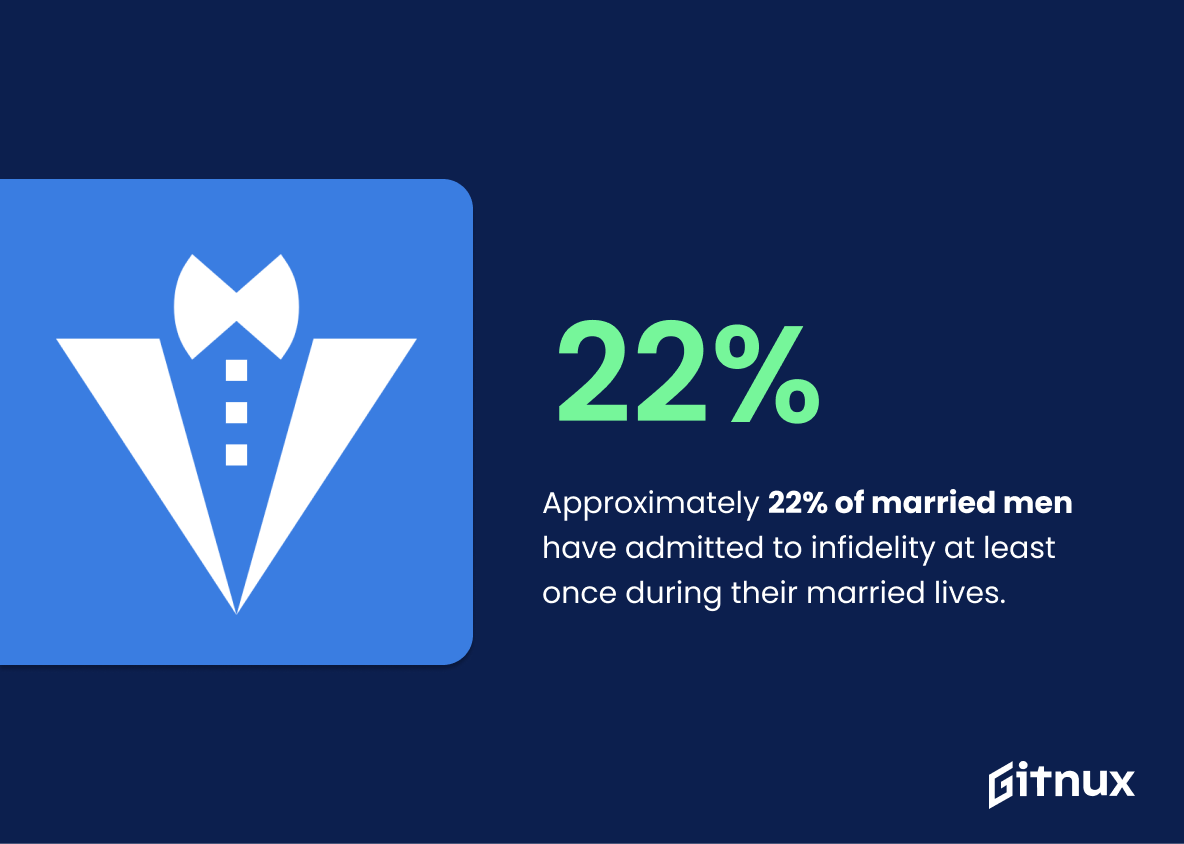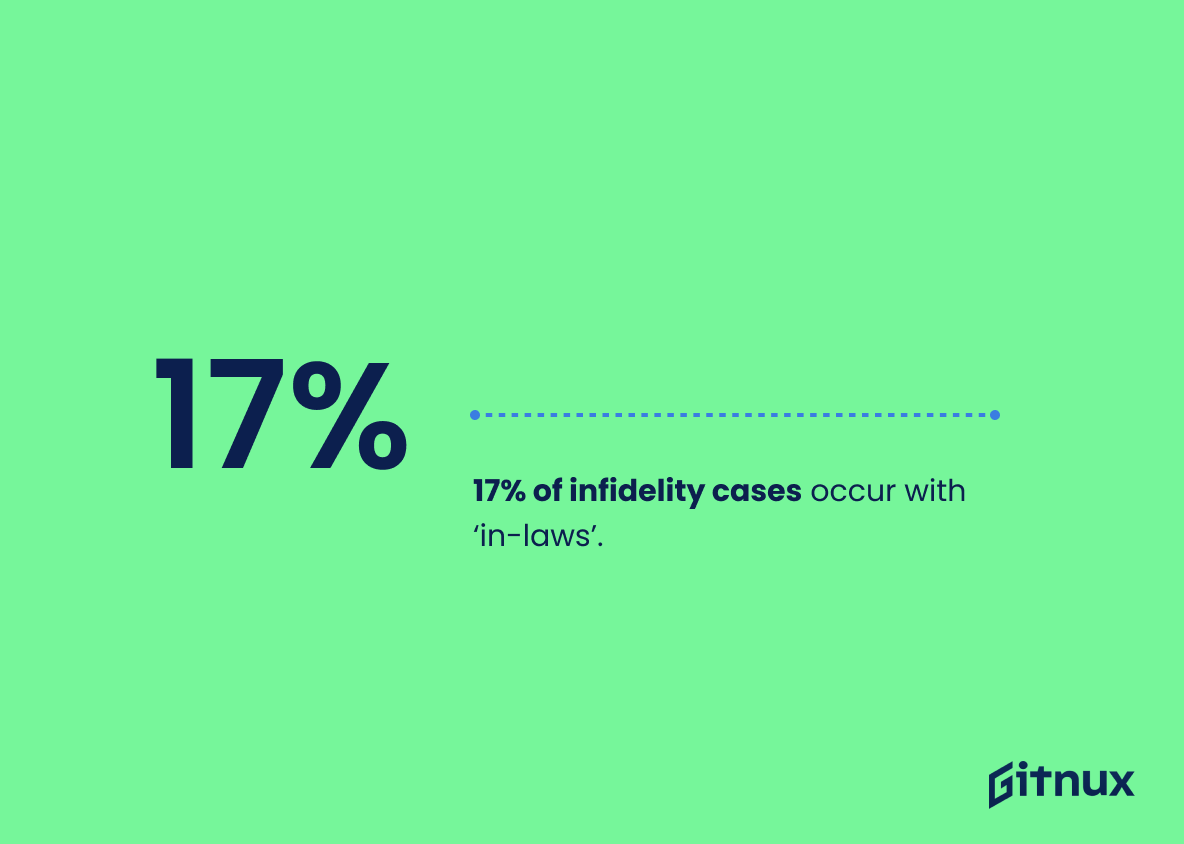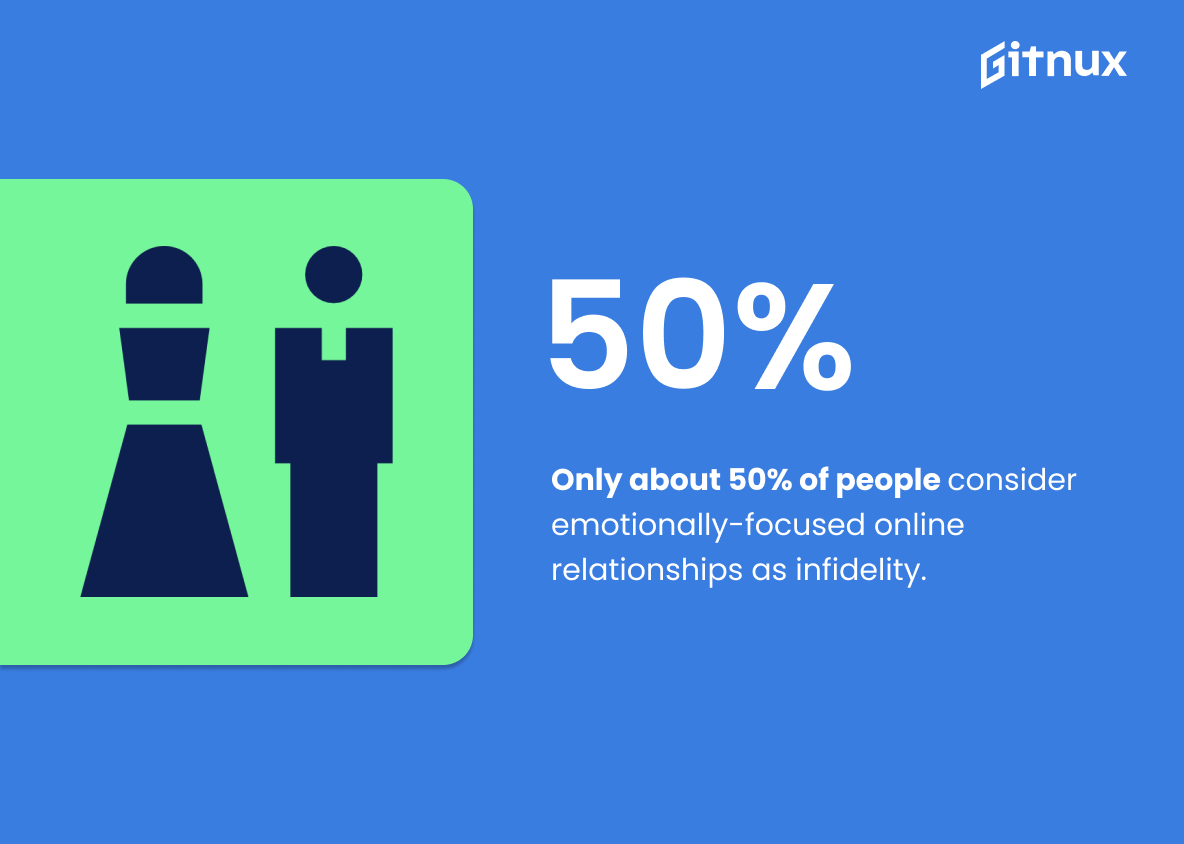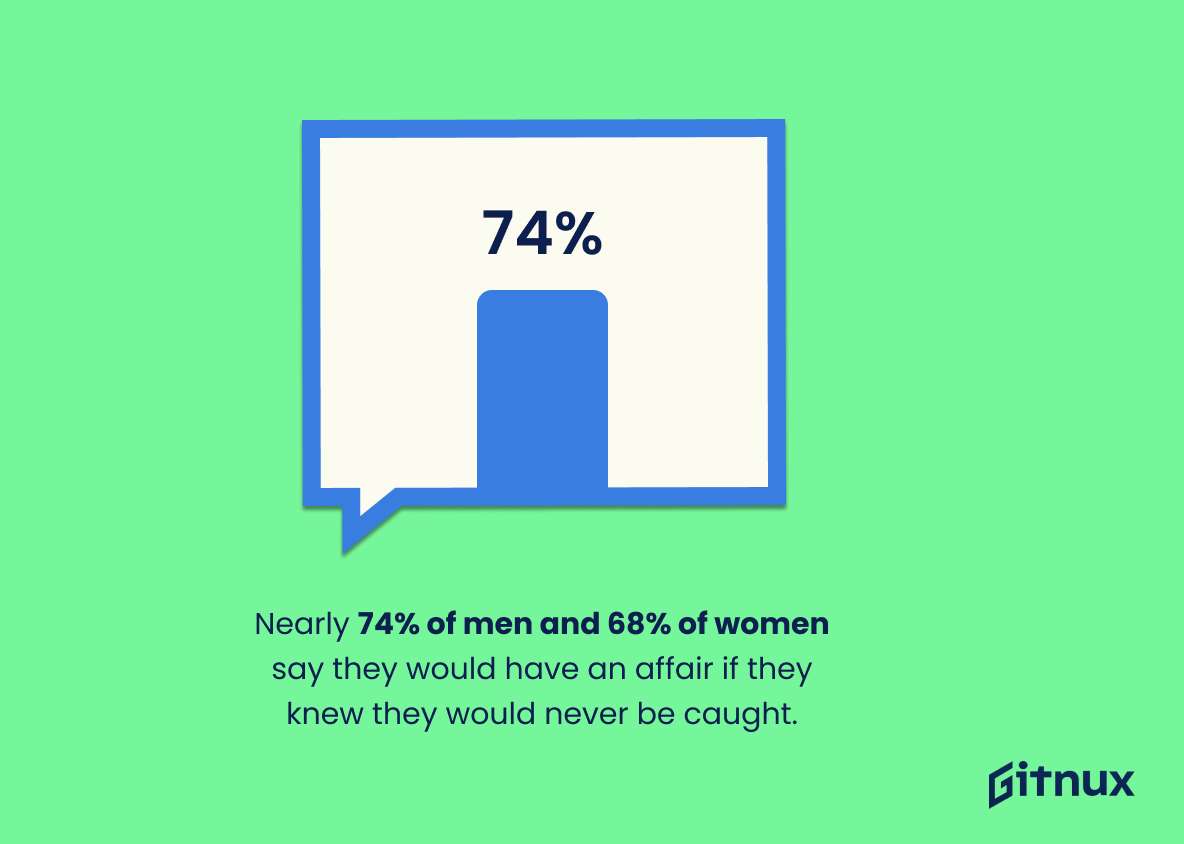Navigating the labyrinthine pathways of romantic relationships can often be a challenging endeavor. One daunting specter that haunts countless partnerships around the globe is infidelity. In the digital era we currently inhabit, this delicate issue has gained additional gravity and complexity. To lay bare the true scale of this global phenomenon, we’ve delved deep into the abyss of infidelity statistics. Prepare yourself for a surprising expedition as we dissect the facts, figures, and trends that unravel the shocking reality of infidelity across different cultures, genders, and age groups. Through this enlightening journey, we aim to equip you with a broader understanding of faithlessness in various contexts, thereby empowering you to negotiate your romantic scenarios better. Buckle up as we take a daring plunge into the often hushed world of modern-day infidelity.
The Latest Infidelity Statistics Unveiled
Approximately 22% of married men have admitted to infidelity at least once during their married lives.
Diving into the depths of matrimonial fidelity, one data point astonishly rises from the darkness – around 22% of married men confessed to at least one act of disloyalty in their conjugal union. This compelling statistic not only weaves a tale of the reality of marital affairs, but serves as the cornerstone of comprehending the landscape of infidelity. By having a hard figure associated with male infidelity, the abstract becomes concrete, and the silent echoes of unvoiced confessions turn into a provocative percentage. Such figure validates the importance of ongoing dialogues and research surrounding trust, loyalty, and betrayal in marriages, delivering not just an interesting read for the blog audience but also a springboard for further discussions on marital morality and stability.
Around 14% of married women have admitted to straying at least once during their married lives.
Reflecting upon this numerical figure of ‘14% of married women straying at least once during their married lives’ gives us a glimpse into the complex dynamics of fidelity within modern marital bonds. It is significant in our contemplation of infidelity statistics because it offers a concrete footing upon which we can navigate this sensitive topic. As bloggers, it enables us to frame our discussion in an empirical context, offering our readers a factual touchstone. This statistic injects a much-needed sense of reality into the conversation, encouraging readers to move beyond stereotypes and myths to embrace a data-driven understanding of infidelity.
17% of infidelity cases occur with ‘in-laws’.
In the intriguing world of infidelity statistics, the revelation that 17% of affairs occur with ‘in-laws’ highlights an unexpected dimension to marital infidelity that readers might not have considered. This seemingly alarming percentage underscores a multi-layered complexity of relationships, serving as a wake-up call that fidelity is not simply challenged by strangers or casual acquaintances, but can be jeopardized by those within our inner family circles. The statistic invigorates the discussion, fostering a broader awareness and reinforcing the necessity of boundaries, trust, and open communication in holding family ties intact.
Approximately 70% of married men and women do not consider infidelity a deal-breaker in a marriage.
In the colorful tapestry that paints the picture of infidelity statistics, our attention is irresistibly drawn to a vibrant but paradoxical thread. It reveals that an astonishing 70% of husbands and wives refuse to view unfaithfulness as the coup de grace in their marriage. Framed in the context of a blog post on infidelity, this intriguing piece of data throws open a multitude of questions, challenging our preconceived assumptions about marital commitment and responses to betrayal. It encourages readers to not just view infidelity in terms of black and white, but explore the grey areas, where reconciliation and forgiveness may lie. Moreover, it transforms our understanding of married couples’ resilience, nuanced viewpoints on loyalty, and their willingness to possibly rebuild what was broken.
Almost 35% of men and women commit infidelity while on a business trip.
In a world where faithfulness is a bedrock of enduring relationships, this revelation that close to 35% of men and women are unfaithful during business trips can significantly stir perceptions. This striking statistic punctuates the astounding truth about relationship dynamics, highlighting how geographic separation can seemingly lure individuals into temporary escape routes from their commitments. In the wider discourse of infidelity statistics detailed in this blog, this information serves as a striking checkpoint that could intrigue readers to re-evaluate the sanctity of their relationships or, even perhaps ignite conversations on newer coping mechanisms in this fast-paced, boundary-blurring corporate world.
Only about 50% of people consider emotionally-focused online relationships as infidelity.
Painting a comprehensive picture of infidelity isn’t possible without discussing the digital landscape and its effect on our perception of relationships. Interestingly, the given statistic underscores that viewpoint, showcasing a clear divide with only half the populace recognizing emotionally-focused online interactions as an equal form of betrayal. This discrepancy in opinions forces us to reevaluate traditional parameters of trust, fidelity, and relationship boundaries, thus accounting further for the complex nature and modern realities of infidelity. It invites dialogue and deeper scrutiny, thereby shedding light on the diverse views of infidelity in the 21st century.
Nearly 74% of men and 68% of women say they would have an affair if they knew they would never be caught.
Threaded within the fabric of our contemplation on infidelity statistics, this particular statistic takes on a vibrant hue, detailing the tantalizing ‘what-if’ scenario. It ignites the discussion with a daring hypothetical – what if an affair could be carried out without the constraint of discovery? Interestingly, with 74% of men and 68% of women signaling a willingness to take the plunge into infidelity waters should this guarantee stand, it provides a deeply revealing perspective into human behavior, fidelity, and the subtle nuances of desire, guilt, and deterrents – essential threads that are interwoven to form the complete canvas of infidelity statistics. This scintillating detail, not only stirs the caldron of debate on morality but also lifts the veil on inherent vulnerabilities in even committed relationships, thereby underscoring the pertinence of continued exploration and open dialogue in this realm.
Around 40% of adults who have cheated before are likely to cheat again.
In an exploration of infidelity statistics through the microscope of societal behavior, this particular statistic serves as an eye-opening revelation. It paints a picture of behavioral patterns among adults, hinting at the likelihood of individuals repeating past transgressions. Providing insights into the unfortunate tendency of repeated infidelity, this statistic allows readers a profound understanding, shedding light on the mechanism of ‘once an adulterer, potentially always an adulterer’. It’s not just a number—it’s a narrative that underscores the importance of trust and steadfastness in a relationship. As unsettling as this may be, it’s a crucial part of the broader conversation around fidelity, reinforcing the significance of consistent honesty in maintaining the fabric of a lasting partnership.
Conclusion
The complexity of infidelity is reflected within the considerable range of statistics shared in this blog post. It’s clear that infidelity is a universal problem, traversing boundaries of geography, culture, age, and relationship status. These numbers not only deepen our understanding of the dynamics of relationships, but also highlight the need for open communication, trust, and constant work towards maintaining the health of a relationship. At the same time, it’s important to remember that every story of infidelity is a personal one and not merely a statistic. Understanding these numbers should be a call to action for everyone to prioritize empathy, honesty, and fidelity in their relationships.
References
0. – https://www.ifstudies.org
1. – https://www.www.statisticbrain.com
2. – https://www.www.webmd.com
3. – https://www.www.pewinternet.org








